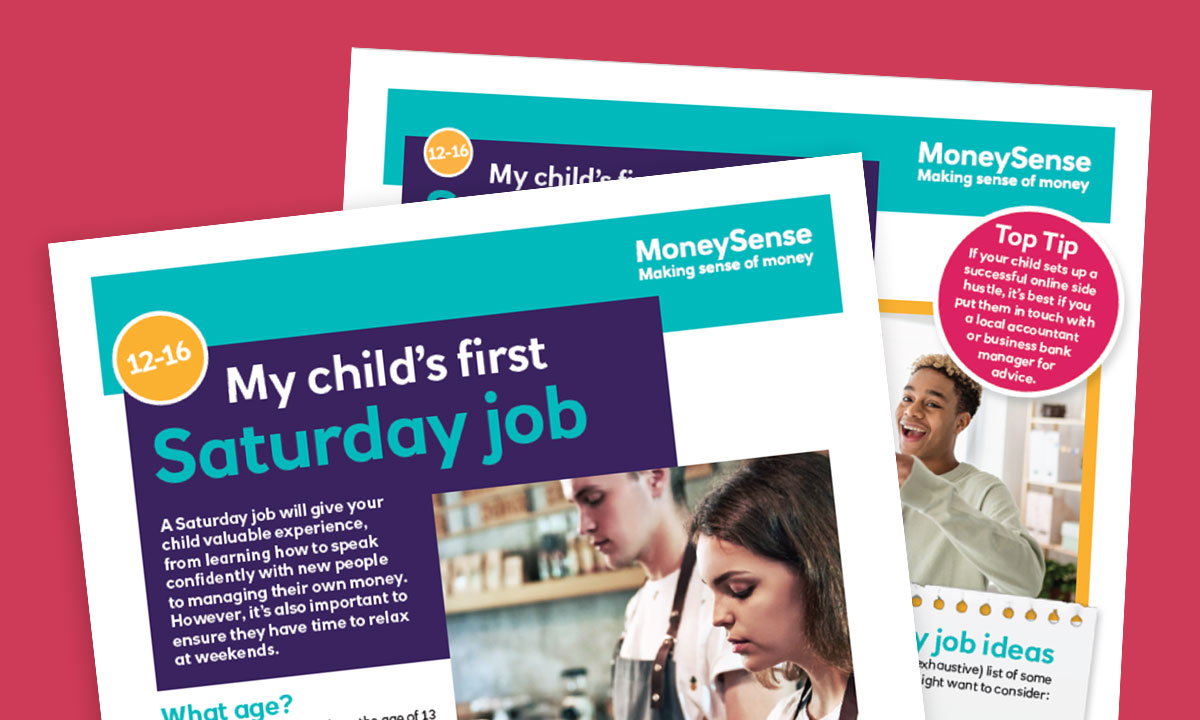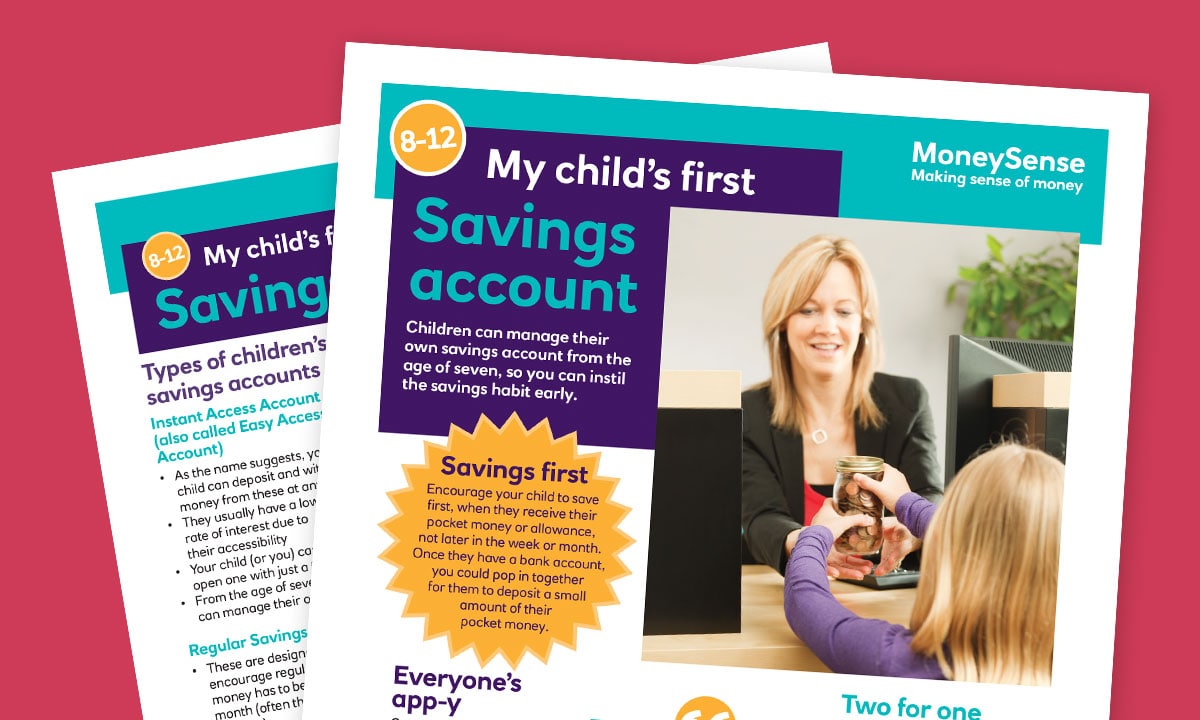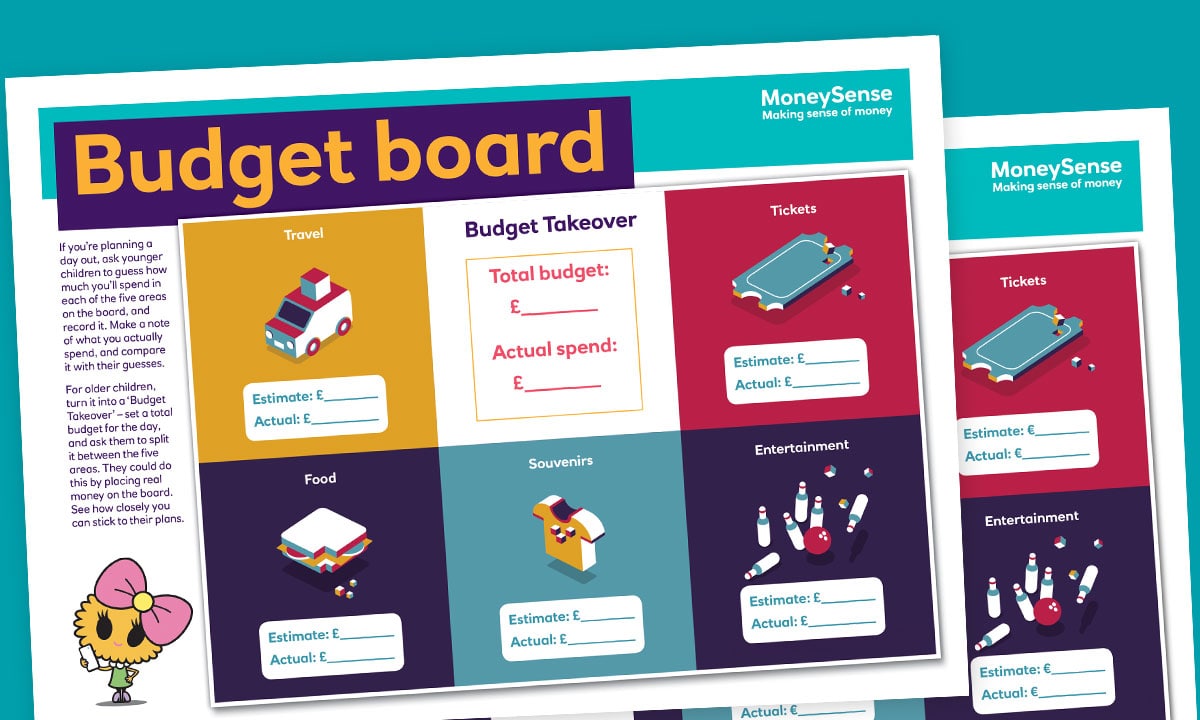Learning about earning
Most children, understandably, think that if you earn £30,000, you end up with £30,000 in your bank account every year. If only that were the case! Money writer Sophie Marie Atkinson takes a look at the reality.

Discussing your earnings with your kids might not feel entirely natural, but it’s a good way to begin to explain how family finances work. Here, we suggest ways to start these conversations with younger family members.
Talking about salaries
Many adults feel uneasy talking to their peers about how much they earn. But being comfortable having conversations about money is a great skill – and one that will benefit your children in the future. After all, you want to teach them that finance isn’t a taboo topic, as this will help them know their own worth and even feel more confident when it comes to asking for pay rises in years to come. Talking to them about your own salary will also help them make sense of your family’s finances and why you say yes and no to certain purchases.
Looking for ways to start these discussions? Ask your children to think of different professions that they’re already familiar with – for example, nurses, teachers, delivery people, bankers, retail workers and cleaners – and consider who earns more, the skills and qualifications required for each role and how their working hours might differ. Consider telling them what you earn, what you do on a day-to-day basis and how your current salary compares to other jobs you’ve done.
Take-home pay – and what happens to the rest of it
Explaining tax to kids can be, well, taxing. But understanding where your money goes and why is a really valuable lesson. Not everyone gets physical payslips these days. Instead, see if you can download one and use it to start explaining that the likes of National Insurance, Income Tax and pension contributions are taken from your salary every month.
Next, you might want to try tackling what happens to each of these deductions. Despite being quite complex, pensions can be a bit more straightforward to explain if you’re taking a general overview. Most of us will work well into our 70s, but eventually, when we’re older, we won’t be able to do as much. If we put money into a pension, the company we work for will add some more, and the government will help out too. Then, when we reach retirement – the years after we’ve stopped working – this money will be available to help support us, even though we no longer have a salary.
Taxes can be trickier to explain, but there are examples all around you to help. Next time you’re at a park together, ask your children who they think pays for its upkeep. Tell them that everyone helps, in the form of tax, which is money we give to the government or local council. The same goes for roads, hospitals and schools.
Where the remaining income goes…
Your kids now have an understanding of how much money actually ends up in your bank account each month. But what happens to it now? Sweets and toys galore? Not quite. Educating your children on what exactly your take-home needs to cover can help them appreciate why money has to be carefully managed and can’t just be spent on a whim. It will also help them understand its value.
The concept of wants versus needs is a strong place to start. Play a game with them where you point out different things around the house and they guess if the items are necessities or luxuries – vegetables vs. sweets, for example, or warm radiators vs. a games console. Be prepared to discuss and even challenge their answers. Explain that food, security and shelter are our main needs as humans, and use this as a way to start talking about how you as a family pay for your own housing, whether that’s via rent or a mortgage. Remember, children aren’t born with the knowledge that these things don’t come for free.
Different budgeting strategies
Next, you might want to approach the concept of budgeting – for example, that in order to provide your family with everything they need, money has to be set aside into different pots. Chat about what these pots are for your family. Do they consist of utilities, groceries and travel? Are you saving for something in particular, such as a fun day out?
There are a number of budgeting strategies you might find useful. One is 50/30/20 – where half your take-home goes on needs; 30% goes on wants, such as eating out, clothes or subscriptions; and the remaining 20% is put towards a long-term saving goal, such as a rainy-day fund or family holiday.
Envelope budgeting is another popular and powerful method. The old-fashioned route saw people physically place cash in different envelopes and then use each one for different spending needs. Today, of course, digital alternatives exist. Using online banking accounts, you can set up different pots – for example, for bills, groceries, savings and having fun. When you’re paid, populate each pot with a set amount. Then, when you need to pay for something, decide as a family where the money should come from, making sure it’s known that once the funds from a particular pot are all gone, it’s empty until the next time you get paid. As well as being an excellent way to start stressing the need for budgeting with younger family members, this is a great strategy for adults who are looking to introduce more discipline to their spending habits.
Image credits: Adobe Stock
Find out about all the latest MoneySense articles for parents by following us on Facebook
Related activities
Want your child to find out more for themselves? Here are some activities to share with them.

 Activities:
Activities: 
 Poster:
Poster: 



